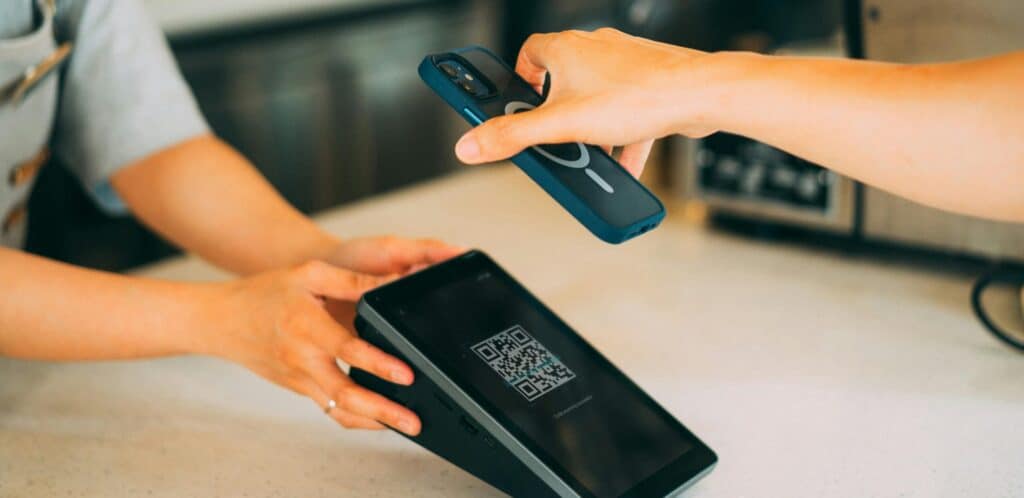Merchant processing is a foundational part of transactions between businesses and their customers. It gives customers a more convenient shopping experience by allowing companies to accept payments in a variety of ways.
Merchant processing also includes several key financial services that help businesses transfer funds, maintain security and compliance standards, and more.
In this article, we will discuss merchant processing and how it works in detail. We’ll also go over some of the fees and costs it includes and how to find the best payment processor for you.
What is Merchant Processing?
Let’s start at the beginning by answering this first essential question.
Simply put, merchant processing is “the acceptance, processing, and settlement of payment transactions for merchants”[1]. In this context, ‘Merchant’ is just another word for business.
Of course, businesses will be involved in thousands of electronic transactions at a given time. Merchant processing services help them verify and authorize these transactions in a fast and safe manner.
Not only that, but they provide a range of other incredibly useful solutions. Here are more details on what a merchant processing service provider will do for your business:
Setting Up Merchant Accounts
Businesses are often required to open a merchant account with their merchant processing service provider. A merchant account is a specific type of bank account that holds all approved funds from customer transactions before they are transferred to the business’s main bank account[2].
Managing Payment Processing
Merchant processing services also help manage the different areas of payment processing between the customer and merchant, as well as the issuing bank and acquiring bank. Merchant processing is strongly related to how these four figures interact, which we will go over later.
For now, it’s important to understand that customers interact with merchant services when they make a purchase from a business that uses merchant processing services. They take the electronic payment details from the customer’s card or device and then send them off for authorization and approval.
Once approved, the merchant processing service will ensure the appropriate funds are appropriately transferred to the merchant’s bank account. That’s the short version, at least.[3]
Providing Payment Gateways & Point of Sale Systems
A merchant processing service will also provide a point-of-sale (POS) system and an online payment gateway. These hardware devices and software systems enable faster and easier transactions for businesses and their customers.
A POS system usually consists of cash registers, receipt printers, and mobile card readers that allow customers to make electronic payments by card or phone. A payment gateway is an online service that integrates into a business’s website so it can securely send transaction data online from a business to a customer’s issuing bank.[4]
Preventing Security Breaches & Fraud
Merchant processing providers also support businesses by ensuring customers’ payment information and personal details remain secure and confidential. Many businesses rely on them to ensure they comply with regulations such as Payment Card Industry Data Security Standards (PCI DSS).
These standards exist to ensure companies protect cardholder data and follow procedures to reduce the risk of fraud. They often include requirements such as using fraud detection tools and monitoring systems to detect and investigate suspicious transactions.
Merchant services may also help companies regularly encrypt customer information and card data, which helps prevent unauthorized parties from accessing sensitive information that could harm both the customer and the company.
How Merchant Processing Works
As we mentioned earlier, merchant processing involves several key figures, including:
- The customer
- The merchant
- The merchant processing service
- The issuing bank
- The acquiring bank
- The card network of the customer
To clarify, the issuing bank is the customer’s bank, which originally issued the customer their debit or credit card. The acquiring bank would be your merchant processor’s bank, which holds your merchant account and receives payment from the issuing bank before transferring it to your own business’s official bank account.
With that explained, let’s get into how merchant processing works:
Step 1 – The Customer Makes a Purchase
It all begins when a customer makes a purchase using their credit or debit card or with another form of electronic payment (ACH, gift card, electronic check, etc.). This can happen either in person with a point-of-sale device or through an online payment gateway on a merchant’s eCommerce website.
Step 2 – The Merchant Sends the Payment Information
Next, the merchant’s POS systems or online payment gateway collects the customer’s payment information and sends it to the merchant processing service. These merchant services then facilitate the rest of the payment process by sending the information to payment processors.
Step 3 – The Payment Processor Sends a Request to the Card Network
The customer information goes through these payment processors, who then send a request to the card network associated with the customer’s card (such as American Express, Discover, Visa, etc.).
Step 4 – Card Network Communicates with Issuing Bank
The customer’s card network then sends a transaction request to the issuing bank. This is to check if the bank has funds available and ensure that the transaction is legitimate.
Step 5 – The Issuing Bank Approves or Declines the Transaction
Next, the issuing bank checks the customer’s bank account to see if they have enough credit or debit funds available to pay for their purchase and any transaction fees. They will also check for signs of potential fraud, such as the cardholder spending higher amounts than usual or using it in unfamiliar locations. Based on what they find, they will either approve or decline the transaction.
Step 6 – Authorization is Sent to the Merchant
The card network, whether the transaction has been approved or declined, then sends it back to the payment processor, which sends it back to the merchant processing service, which then sends it back to the merchant’s payment gateway or POS system. The merchant then gets confirmation on the customer’s transaction status.
Step 7 – The Transaction is Completed
If the transaction was approved by the issuing bank, the merchant can mark it as complete. The customer will then receive a digital or physical receipt and complete their part in the transaction (unless there are any issues they have with it, which come later).
Step 8 – Payment Settlement is Started
At the end of a business day or a chosen period, the merchant sends all approved transactions for payment processing, beginning the settlement process. This finalizes transaction amounts and prepares merchants to receive funds from their customers’ accounts.
Step 9 – Funds are Transferred
The merchant’s payment processor communicates with the customer’s card network and issuing bank to ensure funds are transferred from the customer’s account to the merchant’s acquiring bank account. This step usually takes one to three business days.
Step 10 – Merchant Receives Payment
Once payment processing is completed, the funds are sent from the merchant’s account in their acquiring bank to the business’s account, completing the transaction process.
Step 11 – Potential Disputes & Chargebacks Are Managed
However, if there is fraud or an issue with the purchase, the customer may dispute the charge with the merchant processing service. The issuing bank may then initiate a chargeback, rescinding the transaction and placing funds back into the customer’s account.
Conclusion
The transaction process is complicated but occurs within just a few minutes for the customer and a few days for the merchant.
Ultimately, the merchant processing service facilitates nearly every step, from beginning to end, making it a vital part of almost all business transactions today.
Work with an innovative, secure, and reliable payment processor, like Payment Nerds, to ensure seamless electronic and online payments. Contact us and find out how we provide seamless payment processing solutions for our partners.
Sources
- [1] FDIC. https://www.fdic.gov/regulations/examinations/credit_card/pdf_version/ch19.pdf. Accessed October 16, 2024.
- [2] Wikipedia. https://en.wikipedia.org/wiki/Merchant_services. Accessed October 16, 2024.
- [3] Investopedia. https://www.investopedia.com/merchant-service-8624263. Accessed October 16, 2024.
- [4] Bankrate.com. https://www.bankrate.com/credit-cards/business/merchant-services-a-complete-guide/?tpt=b#associated-service-fees. Accessed October 16, 2024.


